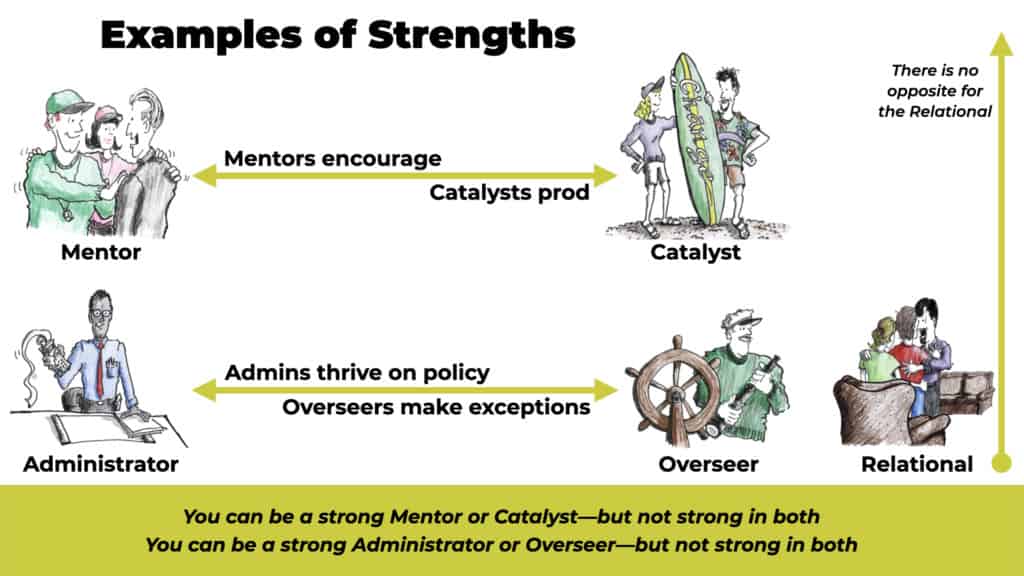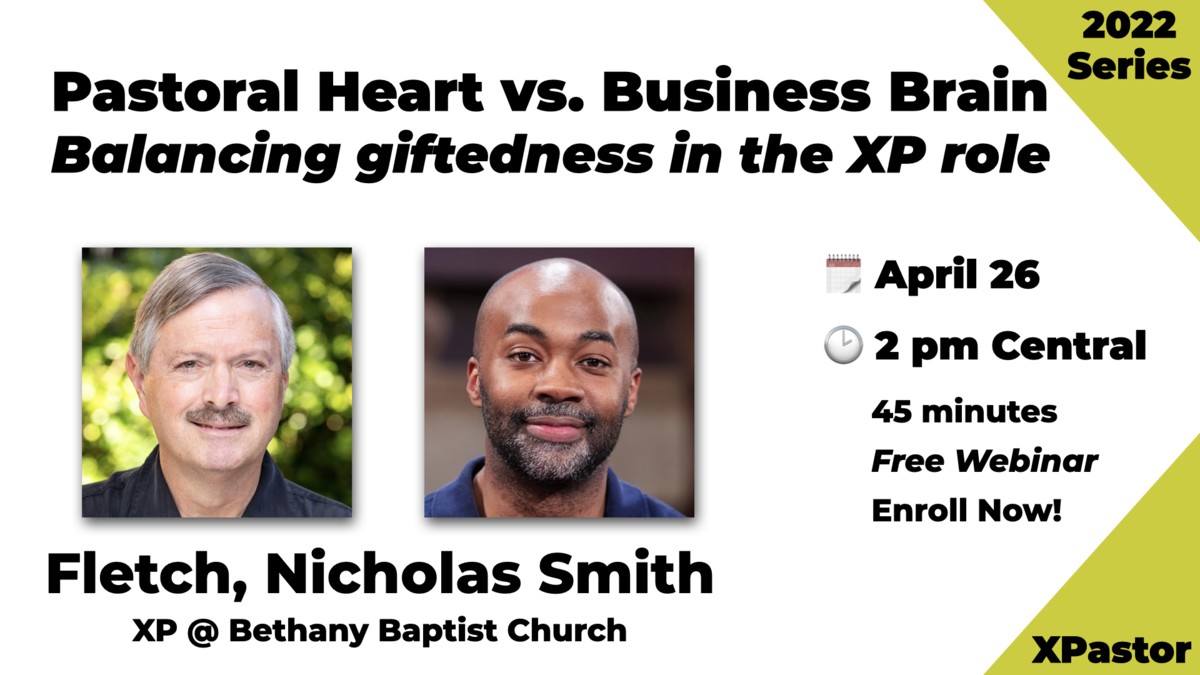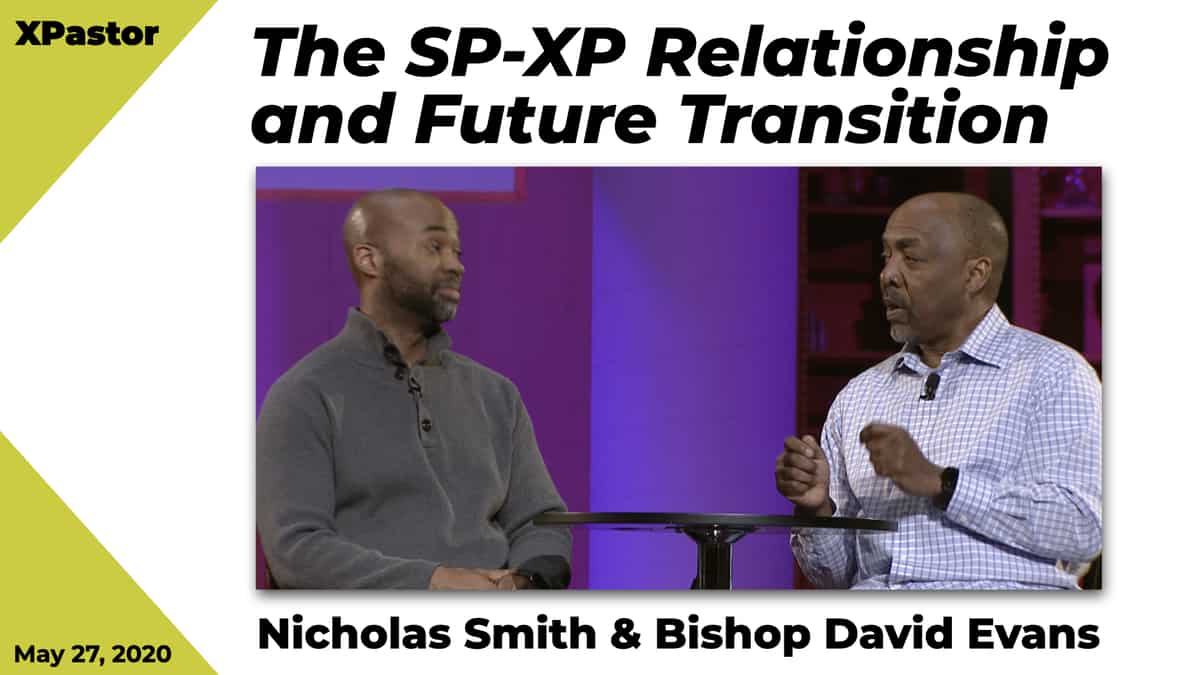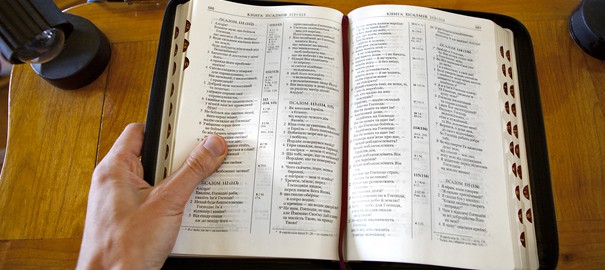There are 5 Functions in church leadership. A variety of church staff use these roles, from senior pastor to executive pastor to others in leadership positions.
Over 4,600 people have discovered their 5 Functions in XPastor’s Strengths Indicator. The functions are Mentor, Administrator, Catalyst, Relational and Overseer. These strengths are our starting points. We can add to areas that are not our strengths with training and skills.
Each leader will be stronger in some of the functions than others. One XP may be a gifted catalyst, while another is a strong mentor. All leaders need to use the other four functions.

Function #1: Administrator
The Administrator and Overseer Functions are at different ends of a continuum. The Administrator is the manager while the Overseer is the leader (now the difference between manager and leader is a thorny one in literature on executives). The Administrator ensures that the engine is running at full capacity while the Overseer ensures that the car is moving in the right direction. The Administrator is in the category that Peter Drucker calls “Top Management.”
Every church leader is part Administrator: The Administrator Function is akin to a church’s Chief Operating Officer. The Administrator often is a liaison between the governing board and others for policy and fiduciary matters. With the Administrator hat, the XP determines staff compensation, ensures budget development and receives advice on legal and insurance issues. The Administrator can serve as a Chief Operating Officer or have a subordinate COO, delegating building management, guiding the master planning process and facilitating hiring architects and contractors. The Administrator can operate as the Chief Financial Officer or have a subordinate CFO, often representing church-wide finances to the governing board and directing capital campaigns to fund new buildings.


The Catalyst
Function #2: Catalyst
Every church leader is part Catalyst: The Catalyst helps envision, start and empower new ministries. The Catalyst challenges people to volunteer for and to improve ministry and lights fires to get people involved in ministry. The Catalyst networks ministries together to enhance effectiveness, seeks out opportunities for members to share the gospel and creates strategic plans for the church.
Most Senior Pastors want their XPs to be a strong catalyst. This is because most Senior Pastors desire to cast vision and have the XP implement the vision, which includes challenging and reinvigorating ministries.
Resource Questions on the Catalyst Function from Steve Roese:
- What is your church’s ethos and what three things could I do to immediately improve it?
- What needs to change and what will your presence at your church mean long term?
- Do you know your staff’s dreams?
- If you could get your church to focus on one thing, what would it be? What is your plan to get there?
Five Key Themes for Catalysts
- Empower members and encourage volunteers!
- Envision and improve ministry
- Light fires and motivate people
- Network ministries
- Strategic plans
Five Catalyst Attitudes and Abilities
- Challenging and exciting
- Daring to change
- “I can’t make an omelet without breaking a few eggs”
- Liberal to radical
- “Rules? What are they?”
In Jerry Wofford’s Transforming Christian Leadership, he has exercise on “Leading the Change Process:”
On a separate sheet of paper, briefly write out answers to the following questions. When you are satisfied with your ideas, discuss them with others in your church: Are there things in the national or local culture that require your church to adapt? If so, list them; Are there individual needs of your members that call for new ministries or approaches? If so, note them; Are there community needs that your church could address but has not? If so, list them; Are there areas of insufficient effectiveness that your church has not addressed? What are they?; What are some kinds of opportunities and challenges that your church might address? (e.g., in areas of worship, prayer, spiritual growth, church planting, missions, discipleship, evangelism); Is there a crisis in your church that demands change? Briefly describe it; Do you see your role as that of a change agent? Identify some of the actions that your role (as you see it) should entail; Do your church’s needs for change call for reformation or revolution? Explain; What might you do to increase the motivation of your church workers?; Are conflicts in your church constructive or destructive? What can you do to resolve destructive conflict?

Function #3: Mentor
Every church leader is part Mentor: The Mentor can work as the Chief of Staff, supervising staff and evaluating job descriptions. This may entail mentoring key staff and exhorting staff members as deemed necessary. The Mentor hires and terminates staff, except the Senior Pastor, and recruits staff for any position as deemed necessary. The Mentor often runs staff meeting and retreats.
What does a Mentor do? Consider Nathan Baxter: Nathan has taken XP mentoring to new heights by deciding to spend the lion’s share of his weekly schedule in guiding, coaching, and praying with his team members. He meets regularly with leaders in his church to help them improve their leadership skills and confidence. During the hour he spends with each of his leaders, they review together the leader’s personal life, leadership skills, ministry advancement and spiritual life. In addition to one-on-one time, he works with two leadership teams, guiding them to further the ministry of the church while experiencing God and one another. He consistently leads the staff to experience community and move beyond the business of the day.

Function #4: Relational
Every church leader is part Relational: The minister conducts weddings and funerals, counsels and disciples members, and teaches a class or small group. Some of these activities are done so that the Senior Pastor is free to pursue other ministries.
The Minister may coordinate cases of church discipline with the governing board and may fill the pulpit when the Senior Pastor is away.
The Minister sees the Senior Pastor as the spiritual leader, communicates with the Senior Pastor about church ministry and often serves the Senior Pastor by “taking things off the Senior Pastor’s plate.”
Generally, executive pastors don’t do a great amount of direct ministry.

Function #5: Overseer
Every church leader is part Overseer. The Overseer attends meetings of the governing board, perhaps as a member. A key aspect of the Overseer is to implement the policies of the governing board. The Overseer monitors every ministry for the Senior Pastor and governing board and often guards and gives advice on the schedule of the Senior Pastor. The Overseer is in charge of all church ministries, managing ministry by delegated responsibility. A key aspect is that the Overseer implements the vision of the Senior Pastor and fills the position as the “second in command” to the Senior Pastor.
The Strengths of the Overseer Function
Based on hundreds of XPs who have took an indicator that XPastor used to have, called the XP-Indicator, we see certain strengths of XPs (the XP-I measured the Five Functions). There are eight key aspects of the Overseer function.
- Approves Procedures
- Oversees all Ministries
- Administers Policies
- Manages Ministry
- Attends Board Meetings
- Implements Vision
- 2nd in Command
- Informs Board of Ministry












